Dear Lite Living Community,
I have something very special to share with you this week. I’m not sure I can do justice to the transformational effect that the art of Pacita Abad had on me, but I am going to try to present her work to the best of my ability.
I’ll (shamefully) admit that I hadn’t heard of Pacita Abad until my artist friend Amélie looked up what was exhibited at the AGO the weekend we were in Toronto. This was the first image that she showed me:
I didn’t need to see anymore. “Let’s go,” I said without any hesitation. Art is an important part of my life and I enjoy spending time in museums. I was glad that my fifteen-year-old daughter was just as keen.
But nothing prepared me to what I was about the witness, and open my heart to.
Right at the entrance, I was confronted with the most spectacular embroidery/ painting - an art form known as trapunto painting (from trapungere, embroider, in Italian), which involves hand stitching and stuffing to embellish painted canvas to create dimensional, tactile surfaces. It was ambitious, bold, and absolutely stunning.

What made this work all the more stunning in my eyes was the political statement and the ugliness it depicted with so much colour and so much beauty. Contrary to the works of Salvador Dali for example that I have always admired, but wouldn’t want to hang up on my living room wall, Abad’s “Marcos and His Cronies” seemed almost benign, humorous, and dare I say, beautiful. And yet, this gorgeous trapunto depicts the Philippine dictator Ferdinand Marcos, who served as a president from 1965-1986, his generals, and other cronies as demon figures, devouring the bodies of the Philippine people (represented by plastic dolls)! I spent a long time in front of this work, trying to take in all the rich details, and what I felt was immense love and care that had gone into the creation of it.
Abad’s works are exploding with colours, and I began to wonder how colours can be utilized also in making political statements. This became all the more pronounced in her works on the immigrant experience, probably my favourite room in the exhibition.
Here are some of the most moving examples:

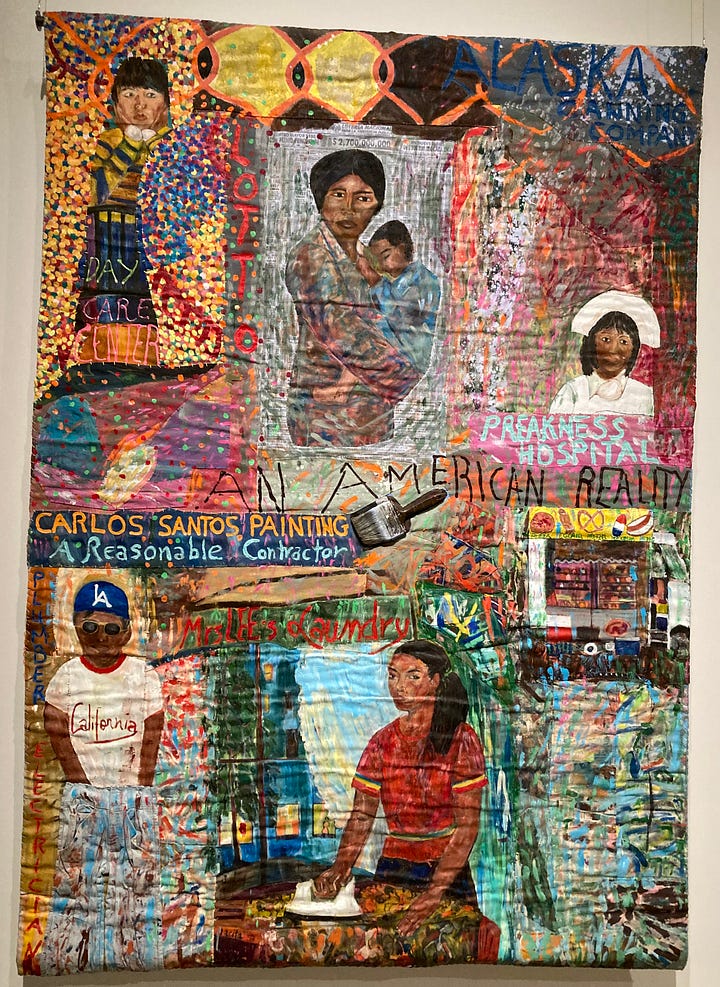




By depicting these two women together, Abad gestures at their shared nationhood and critically examines how Spain's colonization of the Philipines (1565-1898) created false ethic and class divisions.
More residues of the Spanish colonization are depicted in Girls in Ermita (1983):
Abad often drew from her lived experience through political turmoil. The Sky Is Falling (1998), which she made while living in Indonesia in 1998 is yet another example of how Abad utilities colour to make a profound political statement:
When asked in 1991 interview what she felt she had contributed to American art, Abad exclaimed, “Colour! I have given it colour!” I rejoiced when I read this and that Abad “refused to leave white space in her paintings, her clothing, and her home, filling every surface with pattern and pigment.”
Oh, how happy I was to spend time in Abad’s world! In fact, I wish I could live in it forever and never leave. With each work of art I fell more and more enamoured with her artistry, but also with Abad as an artist. Just take a look at this:
How cool, imaginative, and original to show up for the opening of your exhibition in scuba diving gear! How I wished I knew Abad in person and could have been her friend. And how devastated I was to learn that this beautiful person died at the age of 58 after a three-year battle with cancer.
Ars longa, vita brevis, as goes the Latin saying. Art is long, life is short.
Abad parted too soon, but what she has left behind will continue to enrich the lives of those who witness her art. At some point, I turned to my friend Amélie and my daughter Celeste with tears in my eyes. “I am so glad we have done this! I am so glad we are here!” I said high on beauty, joy and life. Never mind the turmoil in the world, while I was in Pacita’s world I couldn’t be happier. The last time I had felt this way was at the Vatican museums after I had overdosed on too much beauty and needed to catch my breath.
And of course, as a writer I was wondering how I could ever create something as beautiful as this with nothing but words. Could I ever succeed in moving someone the way I had been moved by Pacita’s work?
After five hours at the Abad exhibition, Celeste and I thought we would check out the permanent collection at AGO. We lasted maybe fifteen minutes before we sat on one of the museum’s benches. While reclining her head against my shoulder, Celeste said, “you know what, maman? After the exhibition we have just seen, these works of art don’t seem that impressive.” I guess my daughter was also high on beauty. We gave up on the AGO and went to have a Korean meal instead.
A few words and some lousy pictures that unfortunately don’t do the art of Abad enough justice are the only way I can attempt to share with you a fraction of the beauty (and hope!) I took in that weekend.
So why do I do it?
Last month when I shared on notes a work of art that my scientist-wanna-be daughter Celeste had made, I received many complimentary comments. Celeste and I got a kick out of the fact that nothing I had ever written gotten nearly as much attention as her beautiful art work (which of course she thinks is “disgusting”). But there was one comment that both of us found a little strange. It said that I should encourage my daughter to be a scientist because the last thing the world needs is another artist.
Well, whatever my daughter will choose to be — an artist, a scientist, an artistic scientist, or something unrelated to both — I can’t disagree with this statement more! Yes, the world needs artists more than ever, and needs them desperately! Spending some time with Abad’s art I can tell you that my nervous system experienced the kind of calm I hadn’t felt in months, and I was elated. Yes, elated. Instead of being aware of all that is wrong in the world, the ugliness of it all, I felt suddenly hopeful about our humanity. Because of people like Abad who could create such beauty out of the injustice and hardship and insist on the colour when it was so tempting to give in to the grey.
And even now, I am acutely aware that my words fail me in transmitting the hope I felt (and still feel) when I opened my heart to Abad’s masterful work. You just have to see it, and feel it for yourself.
But in the meanwhile, here is a lovely seven-minute documentary on Abad that I think you might enjoy:
This makes me think, please if you have a work of art, song, film, theatre, or written word that you think we can’t afford to miss (wherever you are in the world!), please share in the comment section below. I love to discover works of art, and I think we could all use a little boost of beauty to uplift our spirits!
And as always, thank you for reading me! It’s an honour I don’t take for granted. For more art, poetry, and yoga practices, please consider subscribing to The Art of Lite Living. Your support also helps me do better, and get in front of more people, which is not a small thing :)
Wishing you a day filled with colour and beauty - however ‘useless’ or small!
Imola





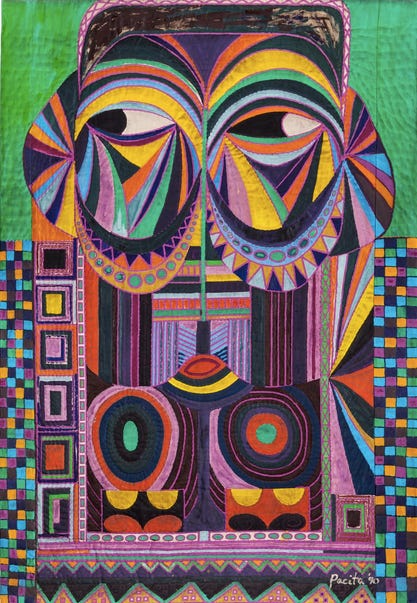

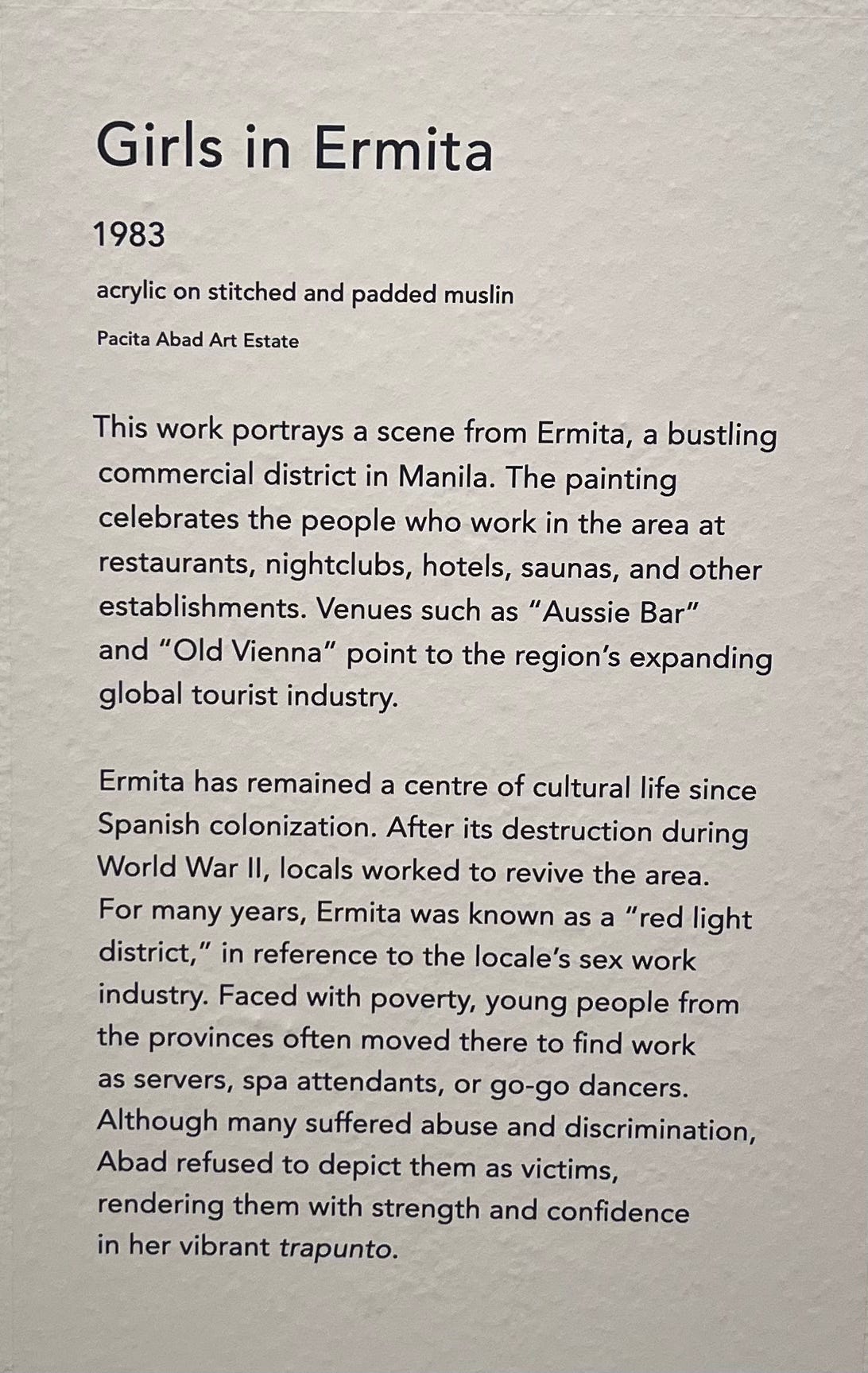
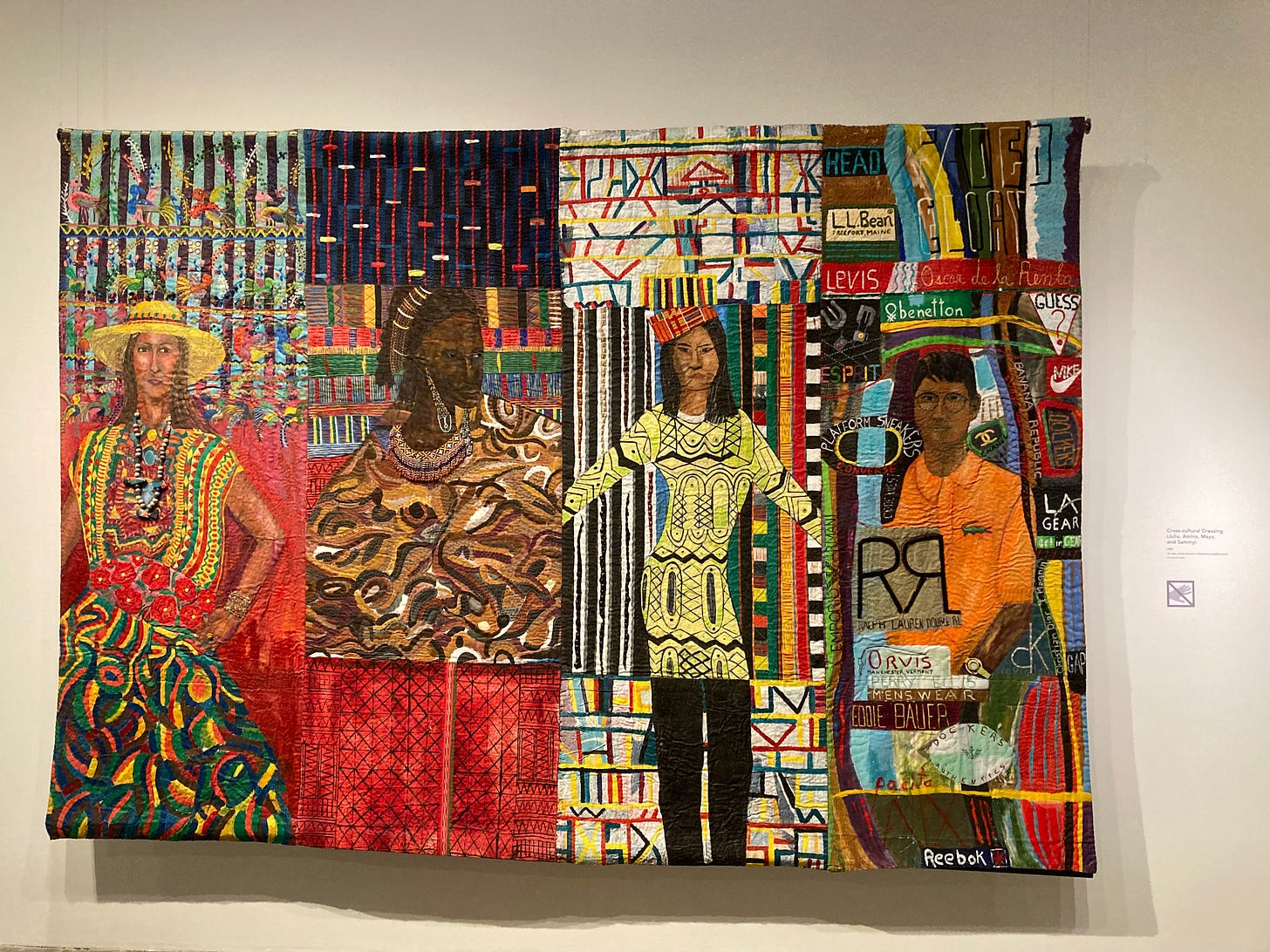

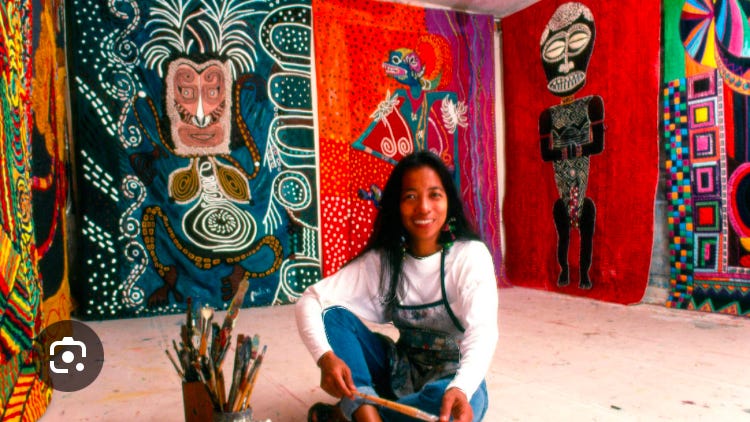

So much colour! Like Jeannie, I find that so symbolic and beautiful. Thank you for sharing Pacita's art with us. And I so agree with you, Imola. We need MORE artists.
Imola, I do not have some visual artwork to share here, but what I want to say is thank you for sharing Pacita Abad's work (I have never heard of her art, either), and what struck me most was that she brought COLOR to the world. That is so symbolic in so many ways. I mean, what would the world be without color? And think of all the colors each human represents or even is--what a delight! What a wonder! We need color. We need vibrancy. We need zest in this world. I think I will ponder that for quite some time.